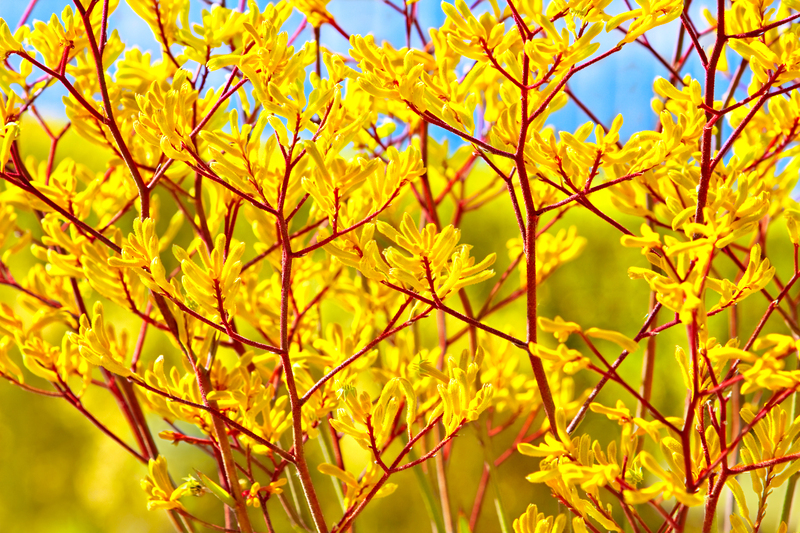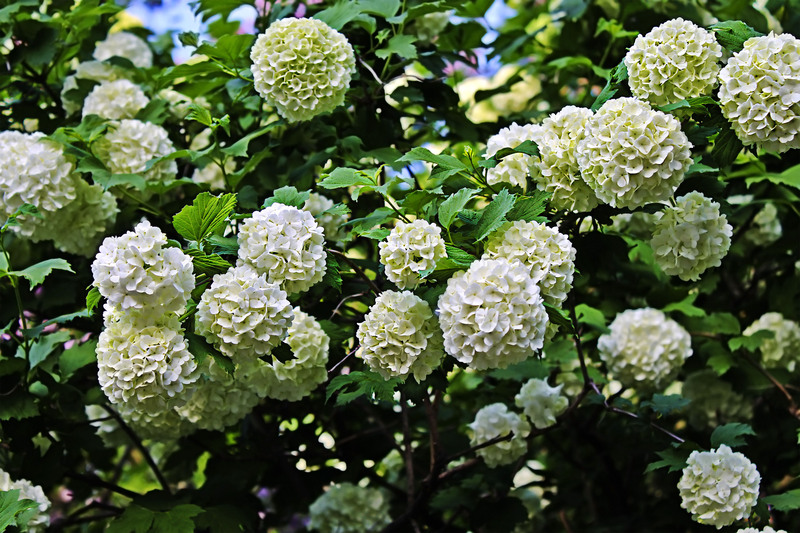Master the art of herb gardening with these essential tips
Posted on 25/05/2025
Master the Art of Herb Gardening with These Essential Tips
Herb gardening is one of the most satisfying and rewarding activities you can enjoy, whether you have a sprawling backyard or a simple sunny windowsill. Learning the art of herb gardening not only guarantees a fresh, aromatic supply of culinary herbs but also connects you with nature while adding beauty and fragrance to your home. Read on to unlock a treasure trove of expert-backed tips designed to help you master the art of herb gardening and transform any patch of soil or pot into a thriving green oasis.
Why Start Your Own Herb Garden?
Starting a herb garden goes beyond just growing plants--it's about nurturing a lifestyle. By cultivating herbs at home, you ensure a regular supply of fresh, pesticide-free flavors and enjoy numerous other benefits:
- Enhanced culinary experiences with freshly picked herbs.
- Cost-effective way to enjoy premium ingredients year-round.
- Improved mental well-being through calming gardening activities.
- Increased aesthetic appeal with lush greenery and inviting aromas.
- Support for eco-friendliness by reducing store-bought plastic packaging.

Choosing the Right Herbs for Your Garden
A key part of herb gardening mastery is thoughtfully selecting herbs that suit your cooking style, climate, and available space. Here are some factors to consider:
- Climate Compatibility: Check hardiness zones and seasonal adaptability.
- Personal Preferences: Select herbs you regularly use in the kitchen.
- Growth Habits: Choose between annual, biennial, and perennial herbs.
- Space Requirements: Decide if you want potted herbs, a kitchen windowsill garden, or a dedicated outdoor plot.
Top Beginner-Friendly Herbs
- Basil - Ideal for sunny spots and popular in salads and sauces.
- Mint - Thrives even with occasional neglect and excellent for teas or desserts. *Note: Grows vigorously; keep it contained.*
- Thyme - A hardy perennial, perfect for borders or pots.
- Parsley - Biennial but often grown as an annual for its luscious green leaves.
- Rosemary - Woody, fragrant, and drought-resistant once established.
- Cilantro - Prefers cooler temperatures; great for salsas and curries.
- Chives - Easy-going and attractive, even when flowering.
Planning and Preparing Your Herb Garden
Strategic planning is the backbone of a flourishing herb garden. Whether you're starting from seeds or seedlings, preparation is vital.
Picking the Right Location
- Sunlight: Most herbs need at least 6 hours of sunlight per day. Indoor gardeners should choose south or west-facing windows, or supplement with grow lights.
- Drainage: Avoid waterlogged soil. Raised beds or well-draining pots are excellent solutions for poor natural drainage.
- Access: Plan placement for convenience; you're more likely to use and tend to herbs if they're within easy reach of your kitchen.
Selecting the Right Soil
Herbs demand loose, well-drained, nutrient-rich soil. Here's how to ensure optimal soil conditions:
- For outdoor beds, amend soil with organic compost or well-rotted manure to boost fertility and structure.
- For pots, utilize high-quality potting mix designed for herbs or vegetables. Avoid dense garden soil, which can retain excess water.
- Check pH: Most herbs prefer neutral to slightly alkaline pH (6.0 to 7.5). You can test soil with simple kits from a garden center.
Planting Your Herb Garden: Seeds vs. Seedlings
When you're ready to start your herb gardening adventure, decide whether to sow seeds or purchase young plants.
- Seeds: Cost-effective and wide variety, but patience and careful attention to light and water are important during germination.
- Seedlings (Transplants): Give a head-start, easier for beginners, and ideal for short growing seasons.
*Tip: Always follow specific growing instructions for each herb to maximize success rates!*
Step-by-Step Guide to Planting Herbs
- Moisten the soil before planting; it should be damp but not soaking.
- Plant seeds at the recommended depth (usually 2-3 times their diameter).
- Gently pat down soil and mist with water to settle seeds.
- If using seedlings, dig holes slightly larger than the root ball, place the plant at the same height it grew in its original container, and backfill gently.
- Label plants, especially if you're growing several similar-looking varieties!
Essential Herb Garden Care Tips for a Thriving Harvest
To truly master home herb gardening, regular and thoughtful care is crucial. Here's how to keep your herbs healthy and productive:
Watering Wisdom
- Water deeply rather than frequently. It is best to let the top inch of soil dry out between waterings.
- Herb pots may need more frequent watering, especially in hot, dry conditions.
- Avoid soggy soil: Overwatering is one of the leading causes of herb health issues.
Fertilizing Herbs Evidently
- Herbs generally require less fertilizer than vegetables. Too much can reduce flavor intensity.
- Use organic, balanced fertilizer or compost every 4-6 weeks during the growing season.
- Avoid high-nitrogen fertilizers, which encourage leafy growth but may suppress essential oils.
Controlling Weeds and Pests
- Mulch garden beds with straw, bark, or shredded leaves to suppress weeds naturally.
- Regularly inspect for pests like aphids or spider mites. Strong herbs like rosemary and sage are naturally pest-resistant.
- If pests appear, use gentle methods first--like washing leaves with water or using neem oil. Avoid chemical pesticides if you plan on eating your harvest.
Pruning and Harvesting
- Pinch back tips regularly to encourage bushier growth. Never remove more than one-third of the plant at a time.
- Harvesting in the morning, after dew evaporates but before the sun gets too hot, ensures maximum flavor and aroma.
- For perennial herbs, prune back woody stems in early spring to promote fresh new growth.
Perfecting Indoor Herb Gardening
Not all gardeners are blessed with outdoor space, but even apartment dwellers can master the art of indoor herb gardening. Here are crucial tips for success:
- Choose compact varieties suited for pots, such as mini basil, curly parsley, or Greek oregano.
- Place herbs in a bright spot with at least 6 hours of light each day. Supplement with fluorescent grow lights if necessary.
- Use lightweight, well-draining potting mix.
- Rotate pots occasionally for even growth, and water carefully to avoid root rot.
- Consider self-watering containers or humidity trays in dry homes.
Troubleshooting Common Herb Gardening Problems
Even seasoned herb gardeners encounter hurdles. Overcome them swiftly with these solutions:
- Wilting or Yellowing Leaves: Usually a result of overwatering or underwatering. Check soil moisture and adjust care routine.
- Poor Growth: Herbs grown in too much shade will become leggy. Move to a sunnier spot if possible.
- Pest Issues: Rinse leaves to remove insects, use insecticidal soap, or encourage natural predators like ladybugs.
- Floppy Stems: Herbs grown indoors need enough light to remain sturdy. Supplement with a grow light if needed.
Expanding Your Herb Garden: Advanced Tips
Once you're comfortable with basic herb gardening, try these advanced tips to elevate your green thumb:
- Succession Sowing: Stagger plantings every few weeks for a continuous supply, especially with basil and cilantro.
- Companion Planting: Plant compatible herbs together--like basil and parsley--or pair herbs with vegetables to repel pests.
- Extend the Season: Use cloches, cold frames, or bring pots indoors as temperatures drop.
- Experiment with exotic or medicinal herbs, such as lemongrass, stevia, or lemon balm once you've mastered the basics.

Harvesting and Preserving Homegrown Herbs
The best reward for mastering the art of herb gardening is enjoying your aromatic harvest. Here's how to make the most of your bounty:
- Harvest: Pick leaves as needed; regular trimming stimulates growth. For large harvests, cut near a leaf pair to encourage branching.
- Drying Herbs: Gather small bunches and hang upside down in a dry, well-ventilated room away from sunlight.
- Freezing: Chop herbs and freeze in ice cube trays with olive oil or water for year-round use.
- Infusions & Oils: Preserve fresh flavor by making herb-infused oils or vinegars. Always use safe, tested recipes!
Conclusion: Your Journey to Herb Gardening Mastery
Whether you envision bountiful beds of lush culinary herbs or a vibrant indoor oasis, the path to herb gardening mastery is within your reach. With careful planning, regular care, and a dash of experimentation, you'll soon savor the satisfaction of harvesting homegrown flavors for every meal. Remember, the essence of successful herb gardening lies in observation, patience, and pure enjoyment of the process.
Start Your Herb Gardening Adventure Today!
No garden is too small to begin. Grab your pots, seeds, and inspiration--your journey to herb gardening excellence starts now. Cultivate, experiment, and most important of all, enjoy every fragrant, flavorful moment!
Searching for more expert gardening tips? Explore our related articles and unlock the full potential of your green thumb!

